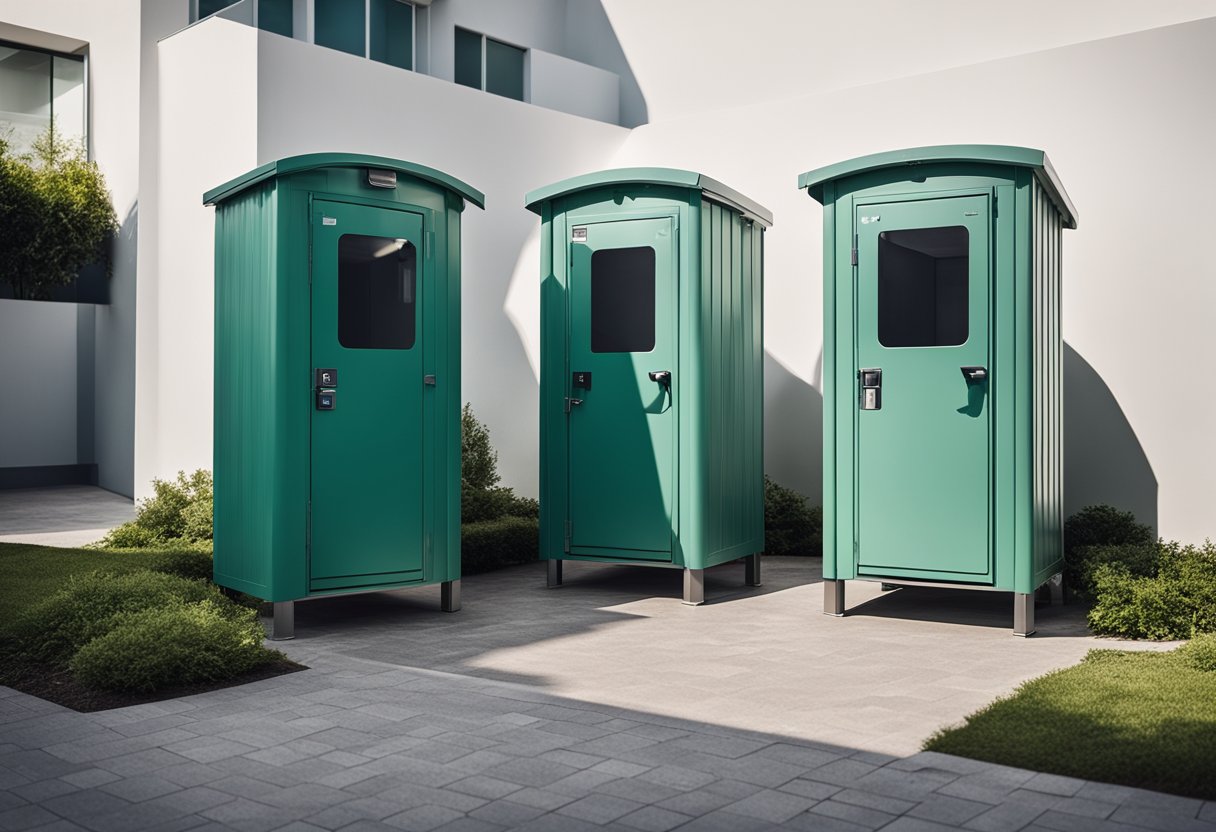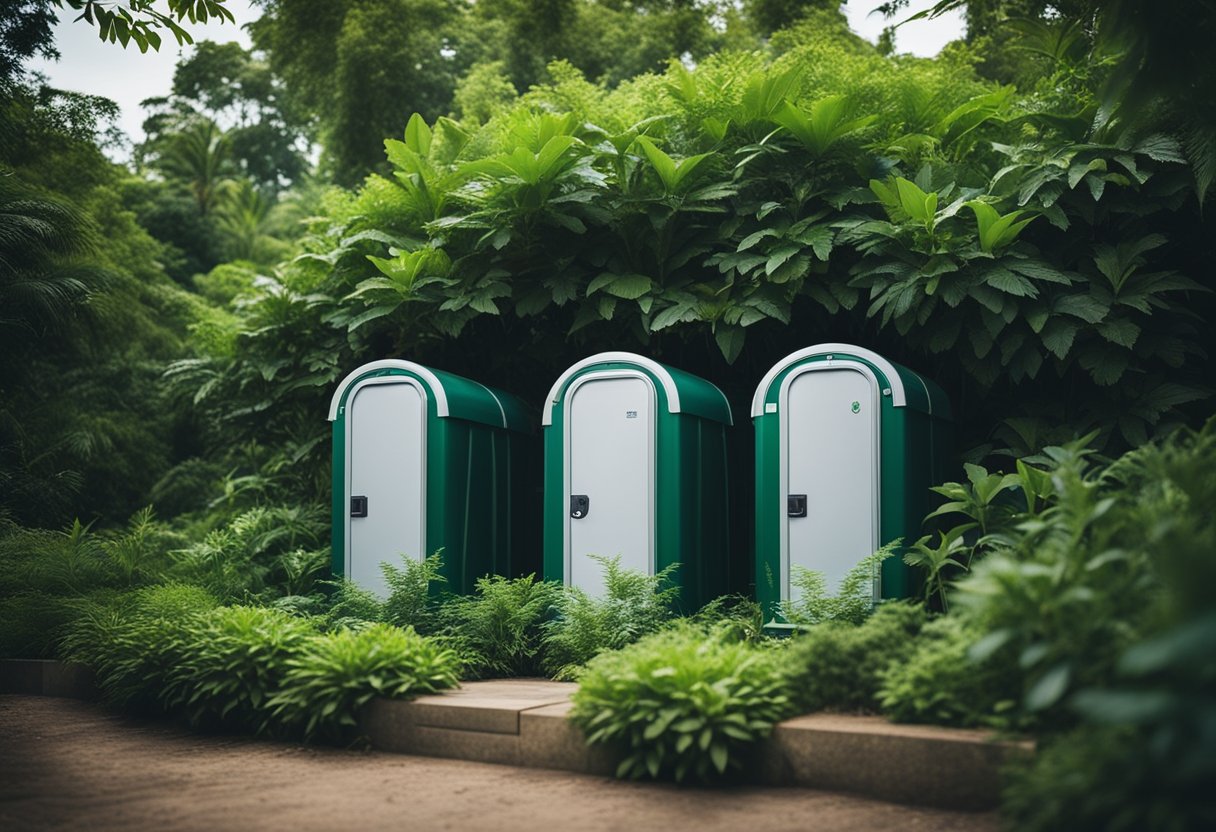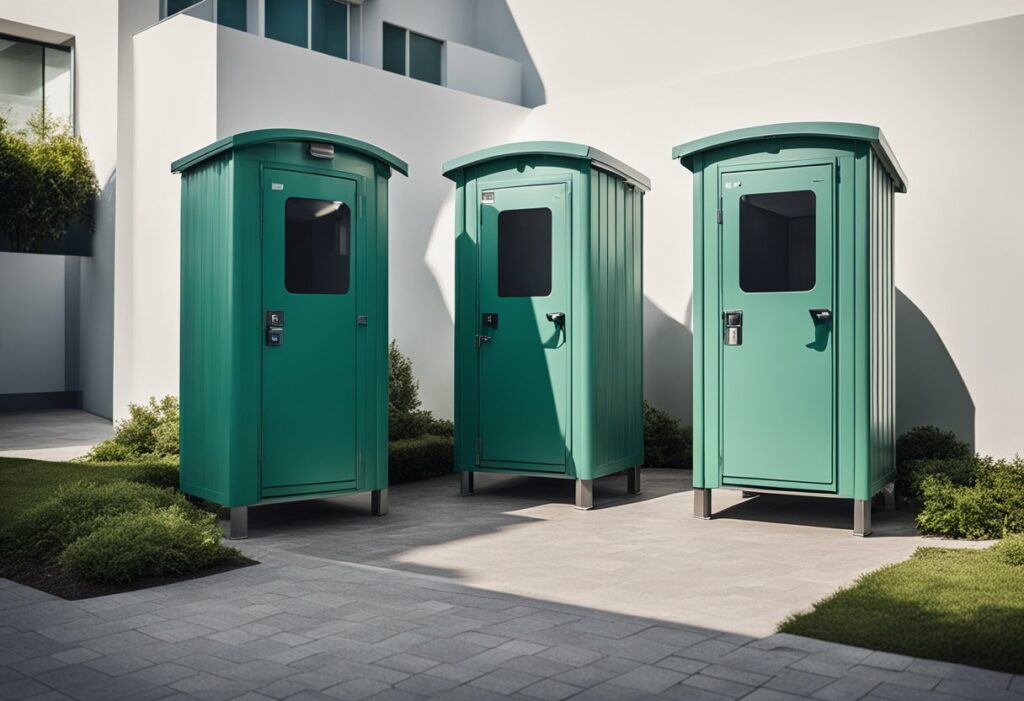Twin Pit Toilet Design: A Revolutionary Sanitation Solution
Twin pit toilet design is an innovative sanitation system that has been gaining popularity in recent years. This pour-flush system is a sustainable solution that can be easily constructed using local materials, making it accessible to communities in need.

The design fundamentals of twin pit toilets are simple yet effective. Two pits are dug, each about three feet deep and circular in shape. The toilet is built over both pits, and when one pit is full, the user can switch to the other pit while the full one is left to decompose. This process allows for the safe disposal of waste without contaminating groundwater or harming ecosystems.
Twin pit toilet design has a significant impact on communities and ecosystems. By providing a safe and hygienic sanitation solution, it can improve public health and reduce the spread of diseases. Additionally, the use of local materials and labour supports local economies and promotes sustainability. Furthermore, the system’s ability to decompose waste without harming the environment makes it an eco-friendly solution that can help protect ecosystems.
Key Takeaways
- Twin pit toilet design is a sustainable pour-flush system that can be easily constructed using local materials.
- It provides a safe and hygienic sanitation solution that can improve public health and reduce the spread of diseases.
- The system’s eco-friendliness and support for local economies make it a promising solution for communities in need.
Design Fundamentals of Twin Pit Toilets

If you are looking for a sustainable and low-cost sanitation solution, twin pit toilets might be the right choice for you. These toilets are a type of water-based technology that uses two pits to collect human waste. They are designed to be simple, affordable, and easy to maintain. In this section, we will explore the design fundamentals of twin pit toilets.
Components and Materials
The structural foundation of twin pit toilets is made up of locally sourced materials such as bricks, stones, or concrete. The pits are lined with impermeable materials like plastic sheets to prevent groundwater contamination. The toilet pan is usually a squatting pan that is placed over the pits. The water seal is an important component of the toilet that prevents odours and pathogens from escaping the pits.
Construction and Operation
The construction of twin pit toilets is relatively simple and can be done using local materials. The superstructure of the toilet can be made of bamboo, wood, or other locally available materials. The operating costs of twin pit toilets are low, and maintenance is easy. Desludging is required once the first pit is full, and the waste is left to decompose in the second pit while the first pit is emptied.
Health and Environmental Benefits
Twin pit toilets have several health and environmental benefits. They reduce pathogens and contamination of groundwater, which can lead to various health concerns. They also promote the safe disposal of human waste and reduce the risk of open defecation. Twin pit toilets are a sustainable and low-cost solution for communities that lack access to proper sanitation facilities.
In conclusion, twin pit toilets are a simple, affordable, and sustainable solution for sanitation needs. With their low construction and operating costs, they are an excellent choice for communities with limited resources. The use of local materials and the easy maintenance of these toilets make them an attractive option for many people.
Impact on Communities and Ecosystems

Community Engagement and Education
Twin pit toilet systems have a significant impact on communities. By providing access to a sustainable sanitation system, households can avoid the health risks associated with open defecation. Additionally, the use of twin pits reduces the cost of sanitation for households, which can be especially important for low-income communities.
To ensure the success of twin pit toilet systems, community engagement and education are crucial. Communities must be informed about the benefits of the system and how to properly use and maintain it. This includes educating households on the importance of alternating between the two leach pits to allow for proper decomposition and avoiding overuse of one pit. By engaging with communities and providing education, governments can increase the adoption and sustainability of twin pit toilet systems.
Ecological Considerations
Twin pit toilet systems have several ecological considerations. One of the main concerns is the impact on the groundwater table. If the leach pits are not properly constructed, there is a risk of groundwater contamination. However, if the pits are constructed correctly and the system is maintained, the effluent can be used as a fertiliser or soil conditioner for agriculture, reducing the need for chemical fertilisers.
Another ecological consideration is the potential for pollution. Improper use or maintenance of the twin pit toilet system can lead to pollution of nearby water sources. To prevent pollution, it is important to properly construct and maintain the leach pits, and to educate households on proper use and maintenance.
Overall, twin pit toilet systems have the potential to greatly benefit communities and ecosystems. By providing access to a sustainable sanitation system and engaging with communities, governments can reduce the health risks associated with open defecation and increase the adoption of twin pit toilet systems. Additionally, proper construction and maintenance of the system can reduce the impact on the environment and even provide benefits for agriculture.
Frequently Asked Questions

How can twin pit toilets revolutionise sanitation practices?
Twin pit toilets are a game-changer in sanitation practices because they offer a safe and hygienic way to dispose of human waste. With two pits instead of one, the system allows for one pit to be used while the other is left to decompose. This means that the waste is treated naturally, and the resulting compost can be used as a fertiliser for crops. By using twin pit toilets, you can help to reduce the spread of disease and improve the overall health of your community.
What ingenious methods ensure twin pit toilets remain odour-free and hygienic?
Twin pit toilets are designed to be odour-free and hygienic. One of the most ingenious methods used is the use of a vent pipe. This pipe helps to create a vacuum that draws air through the pit, which helps to prevent odours from escaping. Additionally, the use of fly-proof covers and regular maintenance helps to keep the system clean and free of insects.
How do you seamlessly transition from a full pit to a new one in twin pit designs?
Transitioning from a full pit to a new one in twin pit designs is a simple process. When one pit is full, you simply switch to the other pit. This can be done by closing the valve on the full pit and opening the valve on the empty pit. The full pit can then be left to decompose, and the compost can be used as a fertiliser. The process is seamless and requires no additional equipment or resources.
What are the environmental benefits of adopting twin pit toilets over traditional systems?
Twin pit toilets offer several environmental benefits over traditional systems. For one, they use less water, which is essential in areas where water is scarce. Additionally, the compost produced by the system can be used as a fertiliser, which reduces the need for chemical fertilisers that can harm the environment. Finally, the system helps to reduce the spread of disease, which can have a positive impact on the environment and the health of local ecosystems.
How do twin pit toilets contribute to sustainable waste management?
Twin pit toilets are an excellent example of sustainable waste management. By using natural processes to treat waste, the system reduces the need for costly and environmentally damaging treatment facilities. Additionally, the compost produced by the system can be used as a fertiliser, which reduces the need for chemical fertilisers that can harm the environment. Finally, the system helps to reduce the spread of disease, which can have a positive impact on the environment and the health of local ecosystems.
What are the critical dimensions to consider when constructing a twin pit toilet?
When constructing a twin pit toilet, there are several critical dimensions to consider. These include the size of the pits, the distance between the pits, and the depth of the pits. The size of the pits will depend on the number of users and the expected amount of waste. The distance between the pits should be at least three meters to ensure that the waste is properly treated. Finally, the depth of the pits should be at least two meters to ensure that the waste is properly decomposed.



